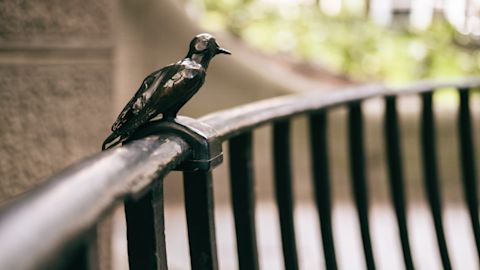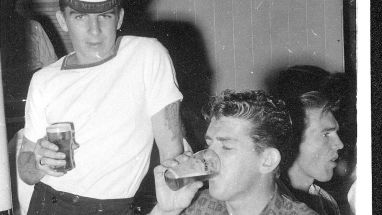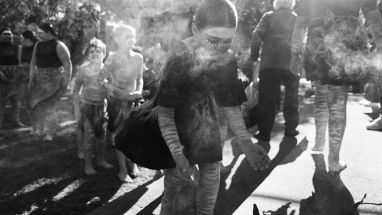
The First World War Soldiers Memorial (Wives and Mothers Memorial)
Andy Wilson has an Edinburgh accent as thick and strong as his hands. A banker mason by trade, he’s been carrying out restoration work for 35 years. There are three apprentices under his watch, carrying out a repoint and clean of the First World War Soldiers Memorial (Wives and Mothers Memorial) in Woolloomooloo.
“I started my apprenticeship when I was 15 in Scotland, then followed a woman to Australia! That old story!” said Wilson. He landed in Australia right as restoration work was undergoing something of a boom, in the early 90s.
He’s had the opportunity to work on some of Sydney’s most iconic buildings, but the clock tower at Town Hall has been his favourite project. “It’s the heart of Sydney. When you go up there, you can’t help but think about all the things that building has seen. The number of famous speeches and moments that have happened right there on the steps.”

The Wives and Mothers Memorial was erected in 1921. It marks a place where so many farewells were made, as young Australian soldiers boarded ships bound for battlefields in Europe.
“When you look at the lime mortar, you can see that it’s eroded away considerably," said Andy. “But that’s what mortar is designed to do, it’s designed to be sacrificial. If there’s any movement in the memorial or the building, the mortar will absorb that. It also allows for the transfer of moisture out through the softer Joints, not through the stone which might lead to deterioration or discolouration.”
“A monument like this will last just about indefinitely,” said Andy. “The Council’s program of monitoring and restoration should ensure it’s here for a very long time.”
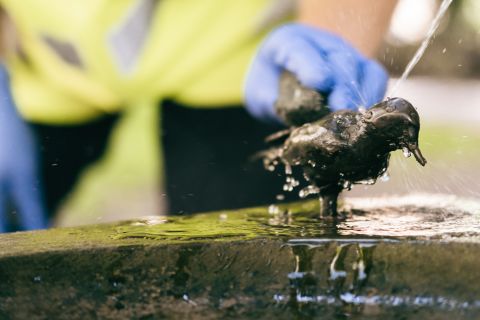
The Distance of Your Heart
Slow down for a moment next time you pass through the northern end of the city and you might spot one of Sydney’s most intriguing public artworks; 62 bronze birds, perched high and low. Once you’ve twigged to their existence, you’re compelled to seek them out, a treasure hunt. The Distance of Your Heart was created by renowned international artist Tracey Emin in 2016, and the life-sized birds require periodic bird baths and waxing to keep them looking at their best.
Object conservators Amy Walsh and Claire Rowson are part of a team undertaking the upkeep. “A lot of our work is with the City of Sydney, but we work with individuals too. One week we’re restoring a public sculpture, the next we’re looking after someone’s grandmother’s silver soup dish!”
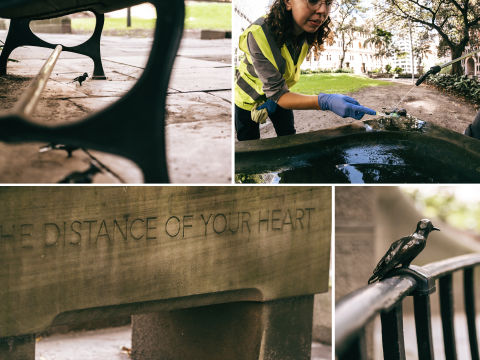
“Getting out on site like this is a treat for us, because we get to talk to people – a lot of conservation work is carried out in libraries, museums or galleries where it’s pretty quiet,” laughs Walsh.
The birds are checked and treated for corrosion, cleaned and then heated before being given a coating of protective wax. “We use a crystalline wax that is designed to degrade over time, and which won’t trap any moisture underneath it,” said Walsh. “It’s one of our conservation principles that any treatment we carry out should be reversible too.”
A pleasant upshot of the maintenance is that it draws attention to the artwork. “A lot of people around here are office workers, bee-lining for the ferries,” said Rawson. “So when they see us with a blow torch, they take notice and become aware of the artwork.”
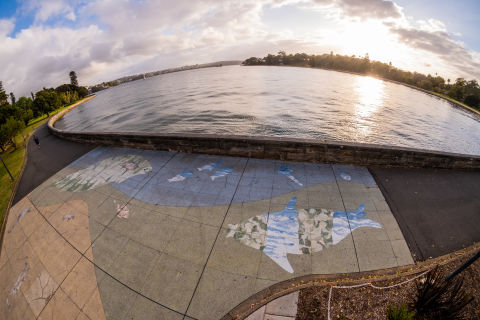
Wuganmagulya (Farm Cove)
With 3.5 million annual visitors, the Royal Botanic Gardens is one of Sydney’s most popular attractions. And it’s safe to assume a fair portion of those 3.5 million people pass right over Wuganmugulya (Farm Cove).
This public artwork created by renowned Australian First Nations contemporary artist Brenda.L. Croft ( Gurindji/ Malngin/Mudburra Peoples; Anglo-Australian/Chinese/German/Irish heritage) in close consultation with Gadigal Elder, Uncle Allen Madden and the Metropolitan Local Aboriginal Land Council. Honouring a nearby initiation ceremony site for Gadigal boys for entry into adulthood, Wuganmagulya is the First Nations place name for Farm Cove.
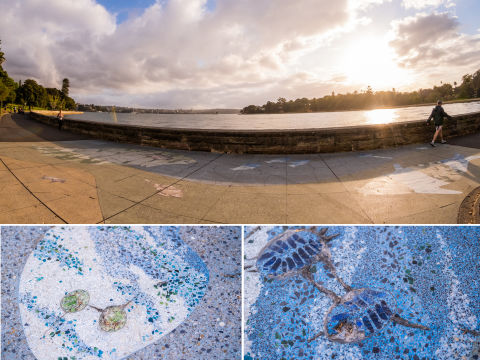
The artwork was conceived in 1998 and installed in 2000. Terrazzo laid directly into the promenade in two locations depicts figures from Eora rock carvings. Some of these carvings were destroyed during the colonisation of Sydney. Eora words - including peoples’ names, rituals, animals, tools and places - are etched into the pathway’s kerb too.
Two decades, countless thousands of foot steps and vehicular travel, and the ingress of seawater through the seawall, mean that Wuganmagulya is due for restoration works in the coming months. Different techniques are being tested for the restoration work. The solution must be sensitive, remaining true to the work’s original concept and form, as well as durable enough for such a culturally significant location.
“20 years is nothing compared to First Nations time frame on this continent,” said Brenda. “But the explosion of cultural reclamation by traditional custodians in the region during that time is amazing and inspiring.”
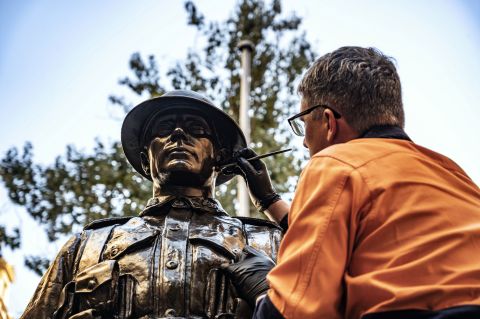
The Cenotaph, Martin Place
For nearly 100 years, the bronze figures of a soldier and a sailor have stood guard over the Cenotaph in Martin Place, silent, observing a city that has changed dramatically during their watch. The figures were created by Sir Edgar Bertram Mackennal and unveiled on 21 February 1929.
As the centrepiece of the City’s war memorials, the Cenotaph commemorates those killed or lost in battle or at sea. It’s the focal point of Sydney’s Anzac Day service, and upkeep of the memorial is undertaken quarterly to keep it in optimal condition.
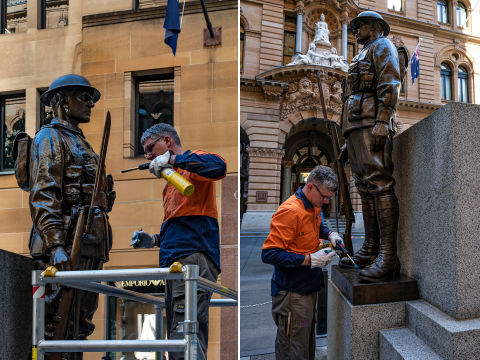
“Here in the city there’s a lot of dust that’s generated,” explains specialist conservator Eoin O’Sullivan. “And that dust can become a trap for all kinds of potentially corrosive substances, breaking down the protective wax coating and damaging the bronze.”
Every season, the Cenotaph is given a surface wash, corrosion treatment and localised waxing. “Many thousands of people walk by the cenotaph each day, plus there are various services here during the year, so it’s important we keep such an important memorial looking presentable,” said O’Sullivan.
The City of Sydney's City Art Program manages over 250 permanent artworks and memorials.
Published 13 August 2021, updated 16 August 2021
